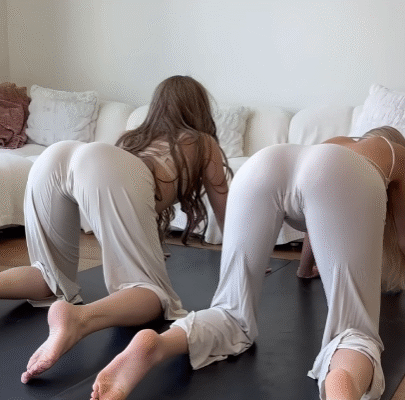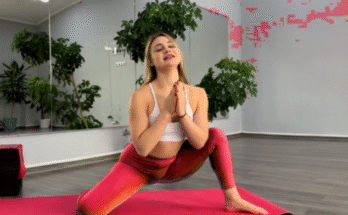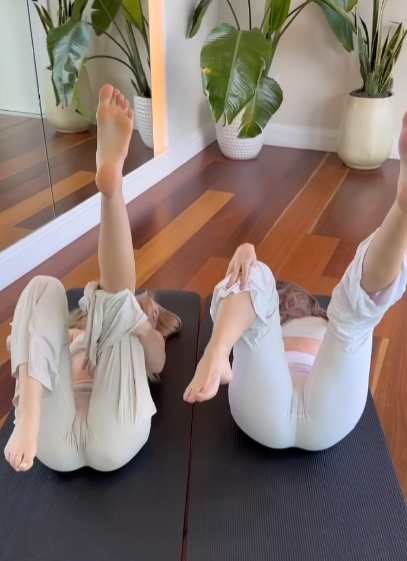
When people think about yoga, flexibility often comes to mind. Among the most important areas to stretch in any yoga practice are the abductors (the muscles that move the legs away from the midline of the body) and the hamstrings (the muscles on the back of the thighs). Together, these muscle groups play a major role in stability, mobility, and athletic performance. A deep abductors & hamstrings yoga leg stretch not only increases flexibility but also relieves tension, improves circulation, and enhances posture.
In this article, we’ll dive into the benefits of stretching these muscles, the anatomy involved, how yoga targets these areas, and some step-by-step poses you can practice to safely deepen your flexibility.
Why Focus on Abductors and Hamstrings?
1. The Abductors
The abductors consist mainly of the gluteus medius, gluteus minimus, and tensor fasciae latae (TFL). These muscles help move the legs out to the side, stabilize the pelvis, and are crucial in walking, running, and balancing on one leg. Tight abductors can cause hip pain, lower back discomfort, and even contribute to knee issues.
2. The Hamstrings
The hamstrings—composed of three muscles (biceps femoris, semitendinosus, and semimembranosus)—run down the back of the thighs. They play a key role in hip extension, knee flexion, and overall leg mobility. Many people suffer from tight hamstrings due to long hours of sitting, which can lead to stiffness in the lower back and poor posture.
3. Working Together
When the hamstrings and abductors are both tight, movement feels restricted and uncomfortable. Yoga stretches targeting these areas release stored tension, allowing greater freedom of motion and reducing the risk of injury.
Benefits of Deep Abductor & Hamstring Stretches
- Improved Flexibility – Regular practice lengthens the muscles, making daily activities like bending, squatting, or lifting much easier.
- Better Posture – Loosening tight hamstrings reduces lower back strain, allowing the spine to align more naturally.
- Enhanced Athletic Performance – Runners, dancers, and athletes gain more mobility and efficiency.
- Injury Prevention – Flexible abductors and hamstrings decrease the likelihood of muscle pulls, hip pain, or knee misalignment.
- Stress Relief – Yoga stretches also encourage deep breathing, which calms the nervous system and eases mental tension.
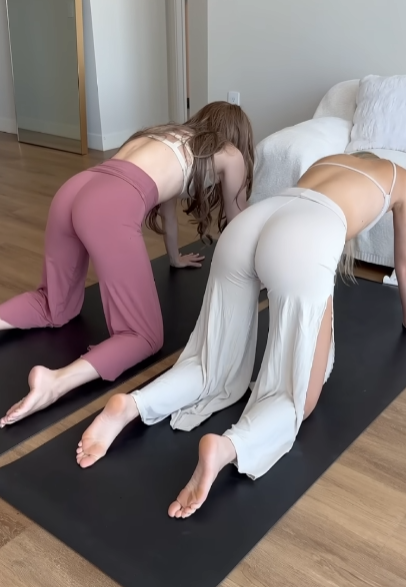
Preparing for the Stretch
Before diving into deep yoga stretches, warming up is essential. A light warm-up increases blood flow and reduces the chance of injury. Some great warm-up options include:
- Cat-Cow Pose (Marjaryasana-Bitilasana): Mobilizes the spine and awakens the hips.
- Low Lunge (Anjaneyasana): Opens the hip flexors, preparing for deeper stretches.
- Gentle Forward Fold (Uttanasana): Begins to stretch the hamstrings softly.
Always listen to your body. Never force yourself into a deep stretch. Instead, let the breath guide you into relaxation.
Deep Abductors & Hamstrings Yoga Poses
Here are some yoga poses that specifically target the abductors and hamstrings, with step-by-step instructions to help you get the most out of them.
1. Wide-Legged Forward Fold (Prasarita Padottanasana)
- Stand with your legs wide apart, toes slightly inward.
- Place your hands on your hips, inhale deeply, and lengthen your spine.
- Exhale as you fold forward from the hips, keeping your back long.
- Place your hands on the floor or hold onto your ankles.
- Stay for 5–10 breaths.
Benefits: Deeply stretches the hamstrings and inner thighs (abductors).
2. Seated Straddle Stretch (Upavistha Konasana)
- Sit on the floor with your legs spread wide apart.
- Flex your feet and keep your back straight.
- Place your hands in front of you and gently walk them forward.
- Lean forward as much as your flexibility allows, keeping your spine long.
- Hold for 30–60 seconds, breathing deeply.
Benefits: Opens the abductors, stretches hamstrings, and improves pelvic flexibility.
3. Lizard Pose (Utthan Pristhasana)
- Begin in a low lunge with your right foot forward.
- Place both hands inside your right foot.
- Slowly lower your elbows to the ground (or use blocks for support).
- Keep the back leg extended and engaged.
- Breathe deeply for 5–8 breaths, then switch sides.
Benefits: Stretches the hip abductors, hamstrings, and hip flexors simultaneously.
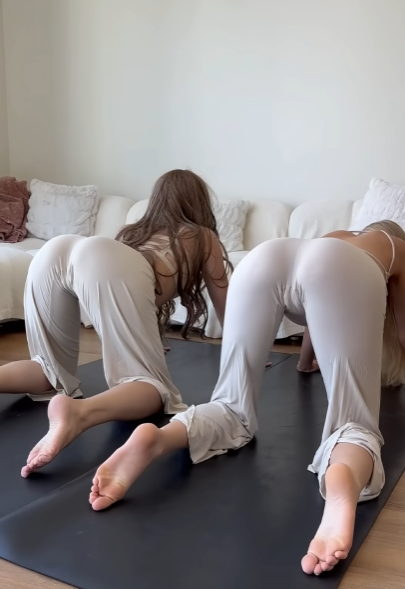
4. Pyramid Pose (Parsvottanasana)
- Step one foot forward and one back, keeping legs straight and hips square.
- Place your hands on your hips or fold forward over the front leg.
- Keep your spine long as you reach towards your shin or the floor.
- Stay for 5–10 breaths on each side.
Benefits: Intense hamstring stretch with pelvic alignment.
5. Reclined Hand-to-Big-Toe Pose (Supta Padangusthasana)
- Lie flat on your back.
- Lift your right leg up, holding your big toe with your right hand (or use a strap).
- Keep the left leg extended on the mat.
- For an abductor stretch, gently open the right leg out to the side.
- Stay for 30 seconds, then switch sides.
Benefits: Stretches hamstrings while opening the inner thigh muscles.
6. Half Splits (Ardha Hanumanasana)
- From a low lunge, shift your hips back and straighten your front leg.
- Flex the front foot and fold over the extended leg.
- Keep your hips square and spine long.
- Hold for 5–8 breaths on each side.
Benefits: Prepares for full splits, stretches both hamstrings and abductors.
7. Full Splits (Hanumanasana) (For advanced practitioners)
- Begin in a kneeling lunge position.
- Slowly slide your front leg forward and back leg backward.
- Use blocks for support under your hands.
- Breathe deeply as you ease into the pose.
Benefits: Ultimate stretch for hamstrings, abductors, and hip flexors.
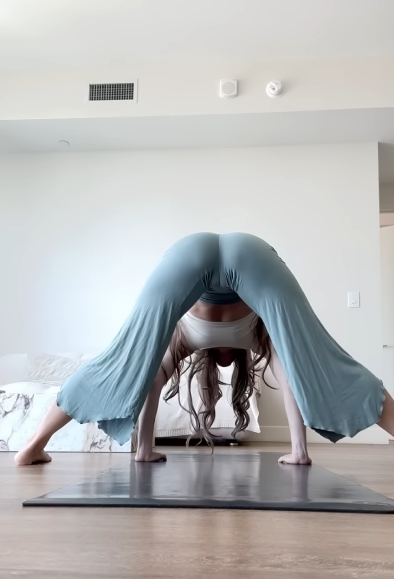
Breathing and Mindfulness
Breathing is the heart of yoga. During deep stretches, inhale to create space and exhale to soften deeper into the pose. This prevents tension and makes the stretch more effective. Try ujjayi breathing (ocean breath), where you slightly constrict the throat to create a gentle sound as you inhale and exhale.
Additionally, mindfulness helps keep you present. Instead of forcing the body, allow gravity and breath to guide you. This mindful approach not only prevents injury but also makes the practice meditative.
Tips for Practicing Safely
- Use Props: Blocks, bolsters, and straps can support your body and help you safely deepen stretches.
- Stay Consistent: Flexibility improves with regular practice, not overnight.
- Avoid Overstretching: A mild pull is normal, but sharp pain is a warning sign.
- Engage Muscles: Strengthen as you stretch to avoid instability.
- Cool Down: End with gentle poses like Child’s Pose (Balasana) or Supine Twist to relax the muscles.
Conclusion
The Deep Abductors & Hamstrings Yoga Leg Stretch is a powerful practice for improving flexibility, strength, and balance in the lower body. By targeting two critical muscle groups, yoga enhances not only physical performance but also overall well-being. Whether you are an athlete looking to improve performance, a yoga enthusiast aiming for deeper poses, or someone seeking relief from stiffness, these stretches can transform your body’s mobility and posture.
With patience, mindful breathing, and consistent practice, your hamstrings and abductors will gradually open up. Over time, you’ll notice greater ease in movement, improved posture, and a sense of lightness in both body and mind.
